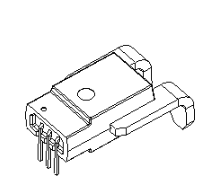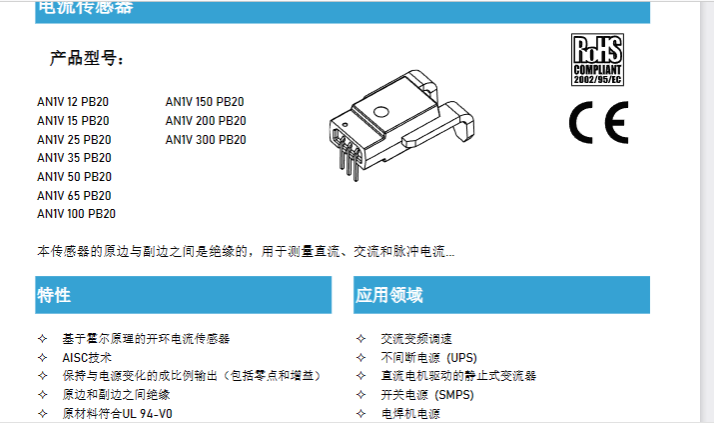In the field of new energy, on-board DC-DC modules play an important role. They provide stable voltage and current for new energy vehicles, ensuring that various devices in the vehicle can work normally. This article will introduce in detail the working principle, types, advantages and applications of on-board DC-DC modules in the field of new energy.
Working principle:
The on-board DC-DC module converts high-voltage DC into low-voltage DC through a transformer, providing stable voltage and current for various devices in the vehicle.
type:
Non-isolated DC-DC module: The non-isolated DC-DC module is directly connected to the vehicle's battery, with higher conversion efficiency but slightly lower safety.
Isolated DC-DC module: The isolated DC-DC module is isolated from the vehicle battery through a transformer, which has higher safety and stability.
Advantages:
Stability: The on-board DC-DC module provides stable voltage and current for the vehicle, ensuring the normal operation of various equipment in the vehicle.
High efficiency: The on-board DC-DC module has high conversion efficiency, reducing energy loss and improving the vehicle's endurance.
Safety: The on-board DC-DC module has high safety and durability, effectively protecting the safety of vehicle equipment and personnel.
application:
New energy electric vehicles: On-board DC-DC modules provide stable voltage and current for new energy electric vehicles, ensuring the normal operation of the vehicle's motor, battery, audio, air conditioning and other equipment.
Hybrid electric vehicles: The on-board DC-DC module provides stable voltage and current for hybrid electric vehicles, ensuring stable operation of the vehicle in different power modes.
Smart car: The on-board DC-DC module provides stable voltage and current for smart cars, ensuring the normal operation of the vehicle's intelligent functions.
In short, the vehicle-mounted DC-DC module plays an important role in the field of new energy. It provides stable voltage and current for the vehicle to ensure the normal operation of various equipment in the vehicle. With the continuous development and popularization of new energy technology, the application of vehicle-mounted DC-DC modules will be more extensive, contributing to green travel and environmental protection.
Related sensor product introduction:

AN1V series is a high-precision open-loop Hall current sensor developed by Xinsen based on Hall technology. It has excellent accuracy, small temperature drift, excellent linearity, and a measurement current range of 50A~300A. It is powered by a single 5V or 3.3V. Due to its high measurement accuracy, small size, low power consumption, single power supply, wide temperature range, and high primary and secondary isolation voltage, it is very suitable for car chargers and DC-DC converters. Please contact Xinsen for detailed specifications.

Previous article:Analysis of the current status of axial flux motors in light truck range extenders
Next article:Overview of Ethernet communication architecture under Classic Autosar
- Popular Resources
- Popular amplifiers
- "Cross-chip" quantum entanglement helps build more powerful quantum computing capabilities
- Why is the vehicle operating system (Vehicle OS) becoming more and more important?
- Car Sensors - A detailed explanation of LiDAR
- Simple differences between automotive (ultrasonic, millimeter wave, laser) radars
- Comprehensive knowledge about automobile circuits
- Introduction of domestic automotive-grade bipolar latch Hall chip CHA44X
- Infineon Technologies and Magneti Marelli to Drive Regional Control Unit Innovation with AURIX™ TC4x MCU Family
- Power of E-band millimeter-wave radar
- Hardware design of power supply system for automobile controller
 Professor at Beihang University, dedicated to promoting microcontrollers and embedded systems for over 20 years.
Professor at Beihang University, dedicated to promoting microcontrollers and embedded systems for over 20 years.
- Intel promotes AI with multi-dimensional efforts in technology, application, and ecology
- ChinaJoy Qualcomm Snapdragon Theme Pavilion takes you to experience the new changes in digital entertainment in the 5G era
- Infineon's latest generation IGBT technology platform enables precise control of speed and position
- Two test methods for LED lighting life
- Don't Let Lightning Induced Surges Scare You
- Application of brushless motor controller ML4425/4426
- Easy identification of LED power supply quality
- World's first integrated photovoltaic solar system completed in Israel
- Sliding window mean filter for avr microcontroller AD conversion
- What does call mean in the detailed explanation of ABB robot programming instructions?
- STMicroelectronics discloses its 2027-2028 financial model and path to achieve its 2030 goals
- 2024 China Automotive Charging and Battery Swapping Ecosystem Conference held in Taiyuan
- State-owned enterprises team up to invest in solid-state battery giant
- The evolution of electronic and electrical architecture is accelerating
- The first! National Automotive Chip Quality Inspection Center established
- BYD releases self-developed automotive chip using 4nm process, with a running score of up to 1.15 million
- GEODNET launches GEO-PULSE, a car GPS navigation device
- Should Chinese car companies develop their own high-computing chips?
- Infineon and Siemens combine embedded automotive software platform with microcontrollers to provide the necessary functions for next-generation SDVs
- Continental launches invisible biometric sensor display to monitor passengers' vital signs
- ST's sensors can be purchased at the STM32 Tmall official flagship store
- Gear Speed Measurement Using Differential Hall Devices
- "Dating in Spring" + "Just Strolling"
- How to build a Keil project using the LPC8xx ROM?
- C2000 CLA FAQ: Architecture and Configuration
- Analysis of China Mobile and China Unicom packages: choosing the wrong package will lead to wasted money
- New infrared temperature measurement thermal imager is coming! AutoNavi holds a press conference in Beijing!
- Divide an assembly file into several assembly files. Compile prompt variable is not defined
- LT8918L: LVDS to 1-Port MIPI signal conversion chip solution introduction
- RF amplifier performance test

 Optimized drivetrain and new semiconductor technologies enable the design of energy-efficient electr
Optimized drivetrain and new semiconductor technologies enable the design of energy-efficient electr
















 京公网安备 11010802033920号
京公网安备 11010802033920号